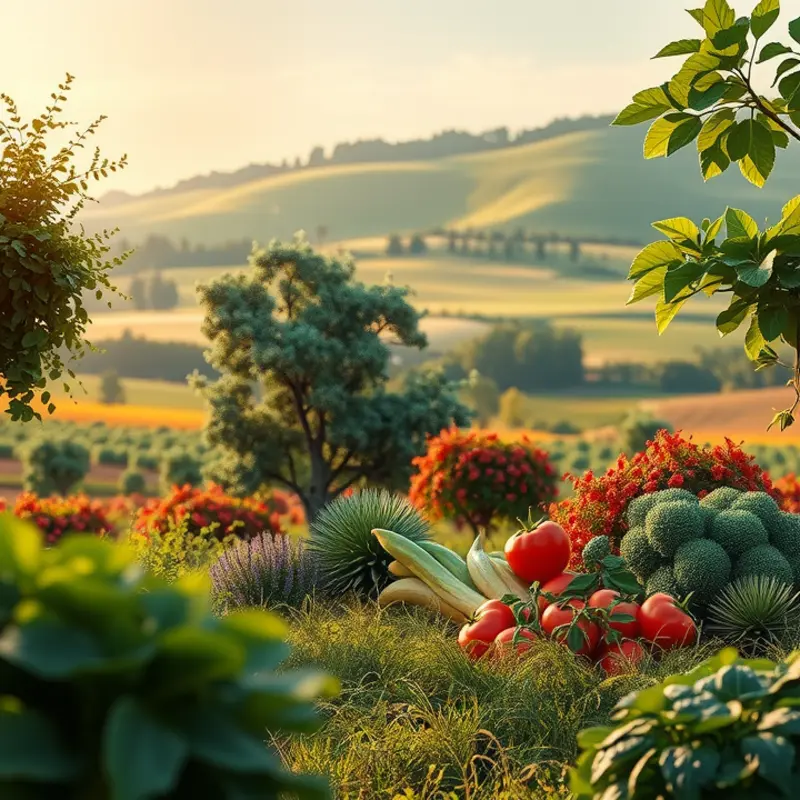Soups serve as more than mere sustenance; they are a canvas for culture, a blend of history, tradition, and region. From hearty bisques to spicy broths, each traditional soup tells a unique story, reflecting the ingredients and culinary techniques of its homeland. Embark on a journey through the world’s kitchens, discovering the warm embrace of soups that reveal the essence of cultures, customs, and community bonds.
The Comfort of Tradition: Notable Soups by Region

Traditional soups serve as both a canvas and a mirror, reflecting the rich tapestry of their cultures. From the bustling streets of Hanoi to the cozy kitchens of Provence, these iconic dishes invite us on a journey through both history and flavor. Pho, an essential dish of Vietnam, typifies this narrative. Its origins are as complex as its broth, one that simmers for hours, infusing beef bones with fragrant spices like star anise and cinnamon. The final presentation, a mosaic of fresh herbs, lime, and tender slices of beef, offers a perfect balance of sour, spicy, sweet, and salty flavors—a harmonious reflection of Vietnamese culinary ethos.
Venturing westward, France introduces us to Bouillabaisse, a deeply storied fish stew from the port city of Marseille. Its creation was born from necessity, utilizing the catch of the day unsold by fishermen. Over time, this humble concoction enriched with local herbs and saffron, evolved into a luxurious dish emblematic of Provençal cooking. Each serving is a vibrant testament to the Mediterranean’s bountiful seas, perfectly paired with a side of rouille sauce and crusty bread.
In Eastern Europe, Borscht stands out as a cultural staple. This vibrant beet soup, though Russian by fame, boasts Ukrainian roots and celebrates the fertile soil of the steppe. Its ruby-red hue is just as striking as its sweet and sour profile, often enhanced by a dollop of sour cream. Borscht not only warms the body but the soul, traditionally served during winter festivities and family gatherings, symbolizing unity and resilience.
Crossing the Atlantic, Chowder captures the essence of New England. With each spoonful, the creamy broth tells stories of early settlers who made the most of coastal ingredients. Thick with clams, potatoes, and a hint of salt pork, it exudes a comforting richness best enjoyed on a brisk autumn day. Over the years, variations have emerged, such as Manhattan’s tomato-based counterpart, illustrating the evolution of American culinary culture.
Southward, Sancocho represents the heart of Latin America. This nourishing stew, commonly prepared in Colombia and the Caribbean, combines root vegetables, meats, and corn. Each island and region adds its twist—some include plantains, others prefer yucca. What remains constant is its role as a communal dish, central to social gatherings and celebrations.
These iconic soups not only highlight regional ingredients but also tell tales of migration, adaptation, and community. Through their diverse flavors, they beckon us to gain a deeper understanding of food’s intrinsic connection to cultural identity. For readers inspired to explore these flavors further, practical techniques like speedy seafood preparation can enhance cooking experiences at home, ensuring even the most intricate traditions are accessible to all.
Crafting Flavor: Techniques and Ingredients

Unlocking the secrets of traditional soup-making involves a tapestry of techniques and carefully chosen ingredients. Each culture contributes its own unique methods, shaped by local environments and ingredient availability. The result is a symphony of flavors that tell stories of heritage and history.
Slow Simmering: This gentle cooking method is a cornerstone of many traditional soups. By allowing flavors to meld slowly, ingredients release their essence, creating a rich and harmonious blend. In places like France, the art of slow simmering is epitomized in a classic bouillabaisse, where seafood meets aromatic herbs, steeping for hours to produce a deeply flavored broth.
Herbs and Spices: Fresh herbs are central to enhancing soups around the globe. They provide depth and complexity, often reflective of the region’s culinary profiles. Consider the use of cilantro and mint in Vietnamese pho. These herbs, added just before serving, bring a fresh vibrancy that balances the hearty broth.
Locally Sourced Ingredients: Traditional soups are deeply influenced by the environment. In regions where agriculture thrives, the abundance of vegetables leads to soups packed with fresh produce. In contrast, coastal areas often have seafood-based broths, enriched with ocean varieties. This local sourcing not only supports freshness but ties the dish to its place of origin.
Fermentation and Probiotics: In places like Korea, fermentation plays a crucial role in soup preparation. Kimchi jjigae leverages the tangy depth of fermented kimchi, blending it with meats and tofu. This process not only enhances flavor but also supports gut health. Such practices highlight the intersection of taste and nutrition, making traditional soups a powerful culinary tool for well-being.
Meat Preservation Techniques: Smoking, curing, and drying are techniques used globally to extend the shelf life of meats, infusing soups with unique flavors. In regions where preserving food for seasons of scarcity is vital, these methods are indispensable. Spanish cocido madrileño often includes cured meats like chorizo, imparting a rich, smoky depth to the soup.
Cooking Vessels and Heat Sources: The choice of cooking vessel and heat source also plays a significant role in the preparation of soups. A traditional clay pot, used in Egyptian molokhia, ensures even heat distribution, enhancing the textures and flavors. Similarly, open wood fires lend a distinctive smokiness to many rustic soups.
Understanding and appreciating these techniques not only enhances our culinary skills but connects us to the cultural narratives behind each bowl. As you explore the world through traditional soups, consider how these crafts reflect the ingenuity of cooks who have, over generations, perfected their art. For those interested in deepening their knowledge of flavors without relying on salt, take a look at this guide on flavor boosters.
Final words
Traditional soups offer a window into the culinary heritage of cultures worldwide. Each bowl is an emblem of history, community, and love, inviting us to taste the narratives crafted over generations. As you explore the distinct flavors and methods behind these beloved dishes, take a moment to appreciate the stories they tell and the warmth they bring. Whether sharing a bowl with loved ones or crafting your own version at home, traditional soups continue to nourish both body and soul.








